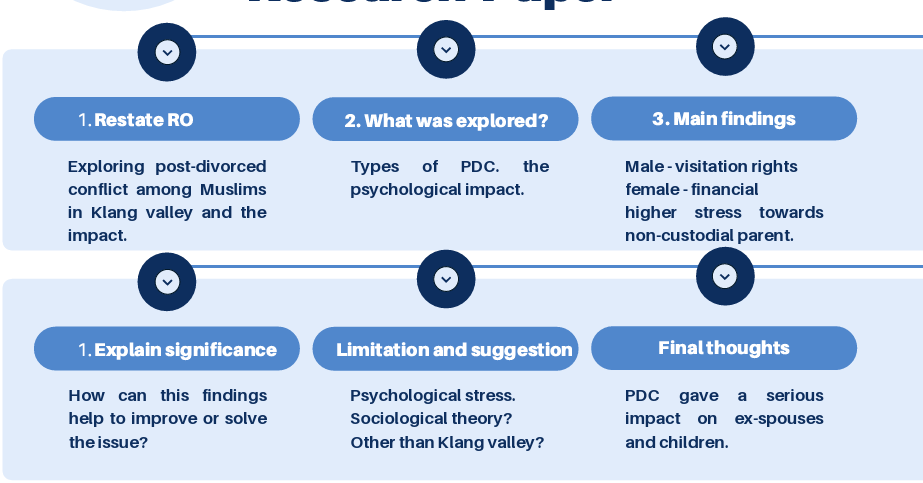Writing Research Paper 6
Definition (#f7aeae)
Important (#edcae9)
Extra (#fffe9d)
Analysis:
Process of examining, organizing and interpreting data to answer the research question or test the hypothesis.
It is how raw data becomes meaningful information.
Methods:
Quantitative
Qualitative
Mixed Methods
Quantitative Analysis:
Used for numerical data to test hypotheses or measure variables.
Descriptive Statistics: Mean, median, mode.
Inferential Statistics: More critical; To analyze correlation.
Ex: Testing if there’s a significant difference in stress levels between male and female students.
Quantitative Analysis:
Non-numerical data such as interview transcripts, open-ended survey responses, or observation notes.
Thematic Analysis: Identifying recurring themes or patterns in text.
Content Analysis: Counting the presence of certain words, phrases, or concepts..
Interpretative Phenomenological Analysis (IPA): Exploring how participants make sense of their personal experiences.
Grounded Theory: Developing a theory from patterns in the data.
Mixed Methods Analysis:
Triangulation: Cross-checking results from both types to enhance validity.
Ex: Participant take a survey and interview or observation in analyzing their stress level.
Complementarity: Using one set of data to elaborate on or clarify the other. To go deeper.
Ex: Divorcee takes interview (quali) and if there’s a post-divorce conflict then a stress test (quanti).
Concluding:

Research Findings:
To present the data you found from your study in a clear, objective, and structured way.
Includes:
Raw findings (mean, median, mode, percentages).
Tables, graphs or charts.
No explanations, just the results.
Result Discussions:
Interpret the results, connect them with past research or theories, explore the implications and discuss their meaning.
Includes:
Explanation of what the results mean.
Connection to theory.
Comparison with past studies.
Implications, limitations, and future research suggestions.
Limitations:
Potential weaknesses or constraints in research that can affect the factuality, generalizability, or interpretation of the findings.
Acknowledging limitations shows you are critical and honest about the work.
Recommendations:
Practical suggestions made by the researcher based on the study’s findings.
Aimed at improving psychological practice, guiding research or influencing policy, intervention, or education.
Types:
Practice-Based: For clinicians, educators.
Policy-Based: For government, institutions, NGOs.
Research Based: For future studies.